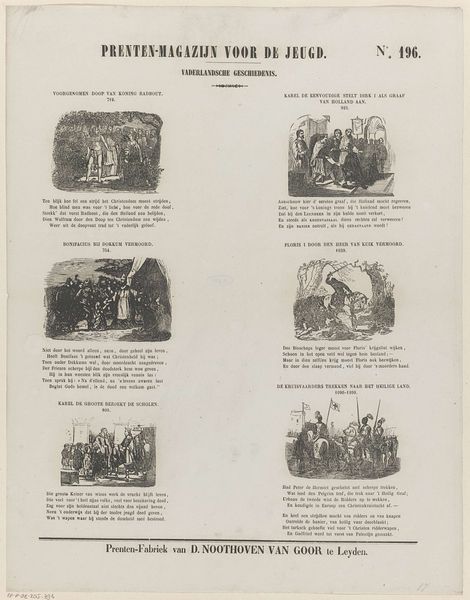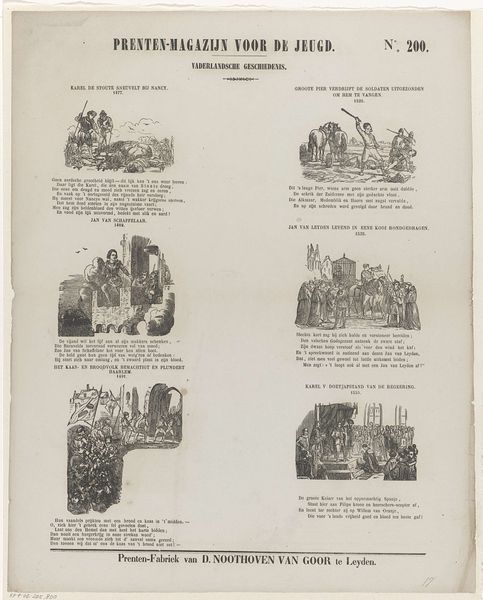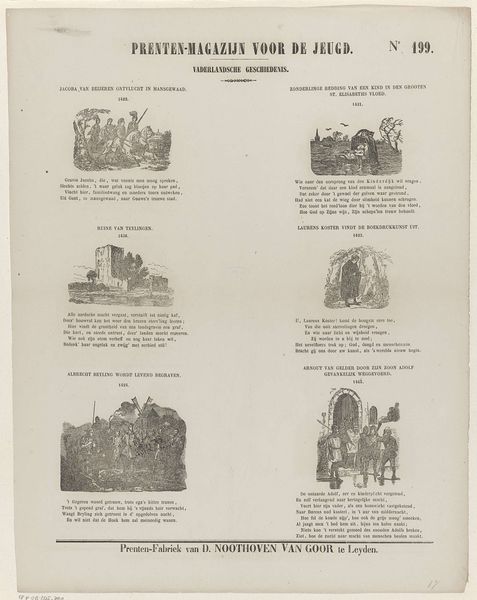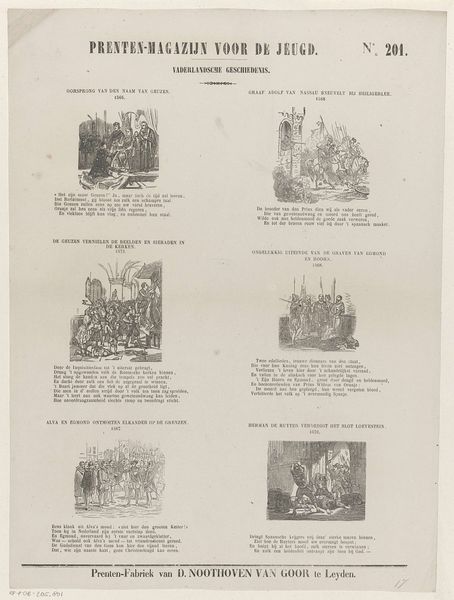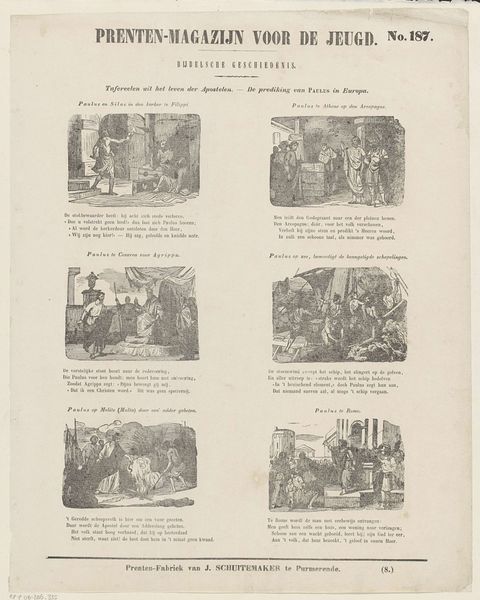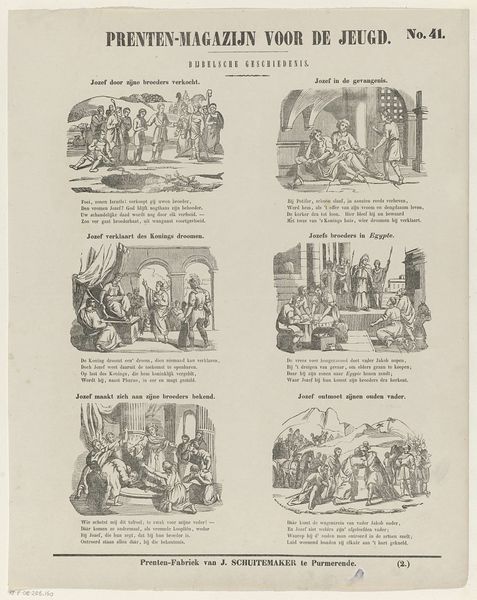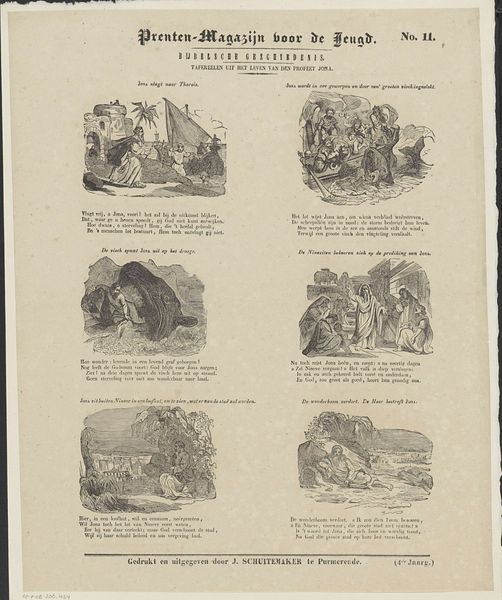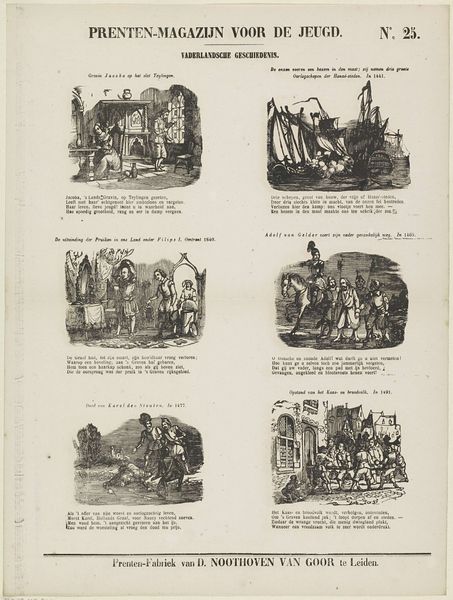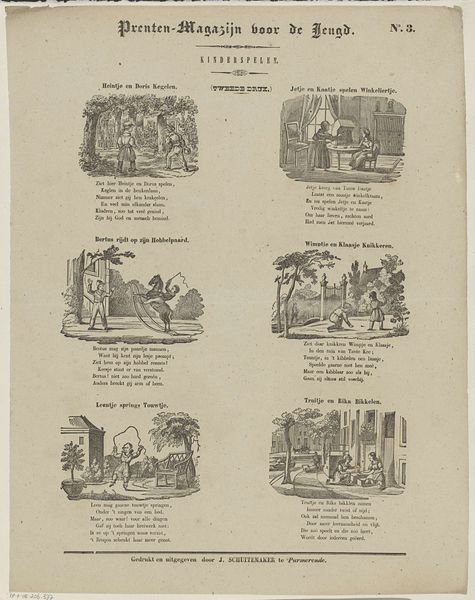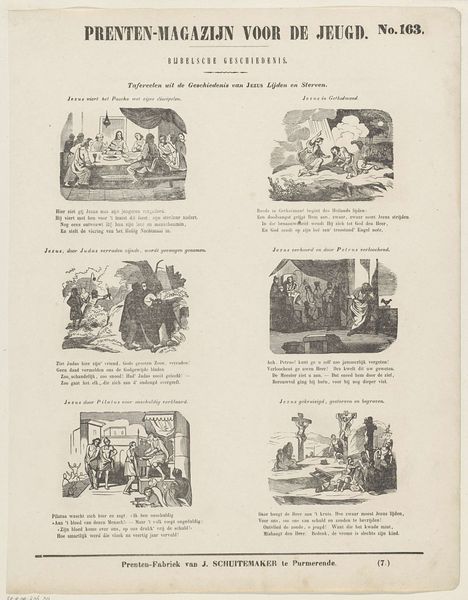
graphic-art, print, engraving
#
pencil drawn
#
graphic-art
#
narrative-art
# print
#
history-painting
#
engraving
Dimensions: height 404 mm, width 291 mm
Copyright: Rijks Museum: Open Domain
Curator: Dirk Noothoven van Goor’s "Vaderlandsche Geschiedenis," created between 1850 and 1881, presents us with a fascinating series of engraved vignettes depicting Dutch history. It almost resembles an informational poster of sorts. Editor: Indeed. My immediate impression is that the artist prioritized clear, illustrative depictions of key historical moments. It feels quite graphic in its composition. Curator: Absolutely, and considering the socio-political climate of the 19th century in the Netherlands, these engravings served a didactic purpose. It visually reinforces the established narratives of Dutch courage and resilience, particularly during the Eighty Years' War against Spain. Editor: It is evident the artist skillfully used line and texture to convey detail despite working within the limitations of printmaking. Take the image of Kenau Hasselaar, the woman leading three hundred others to help with defending Haarlem – it presents clear compositional balance, with the figures effectively filling the frame. Curator: Hasselaar is indeed presented here as an exemplar of Dutch resistance, furthering a certain constructed myth. The choice to highlight her actions – a woman in a prominent role – serves a potent nationalistic purpose and tells of social views during that time, positioning female bravery within the context of national survival. Editor: Let’s observe how the composition guides our eye across different scenes chronologically, and we note the engraving technique lends itself particularly well to create stark contrasts between light and shadow, thus heightening the drama within each scene. Curator: It brings to light the intricate relationship between art, history, and identity construction. It offers insight into the stories we choose to tell ourselves as nations, and about the narrative purposes these artworks once played in constructing cultural memory and patriotism. Editor: These engravings are not mere illustrations. They reveal how the formal language of art—structure, texture, and composition—can convey particular cultural perspectives on pivotal historical narratives.
Comments
No comments
Be the first to comment and join the conversation on the ultimate creative platform.
